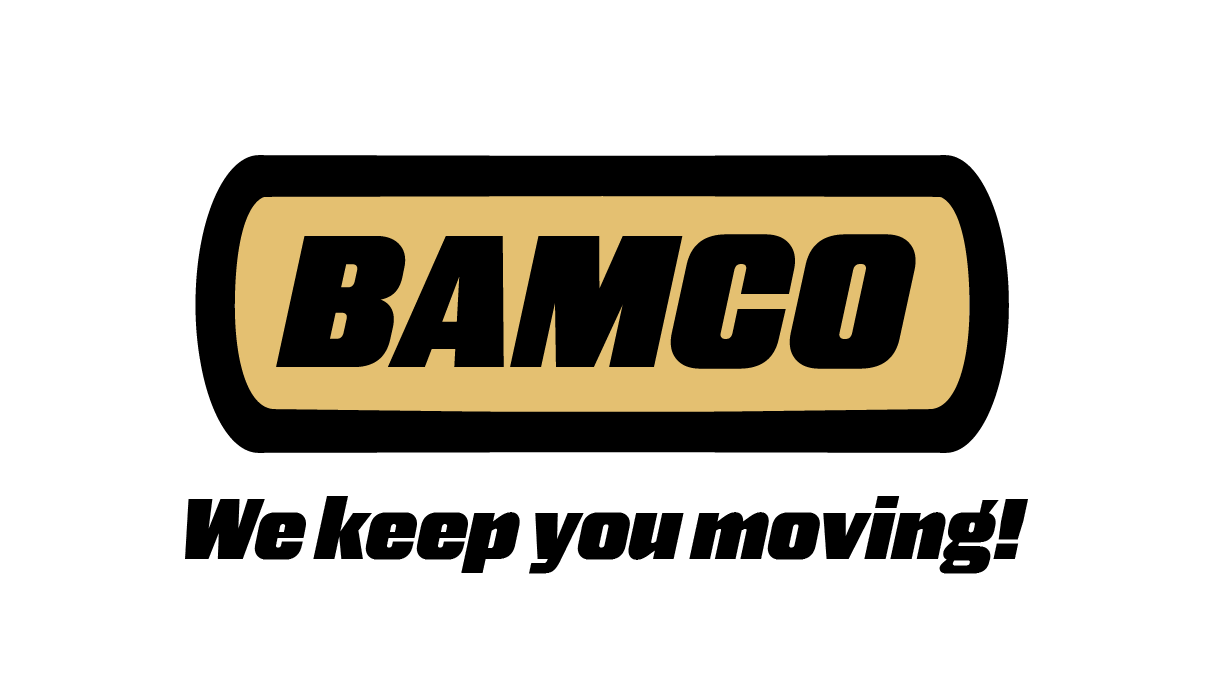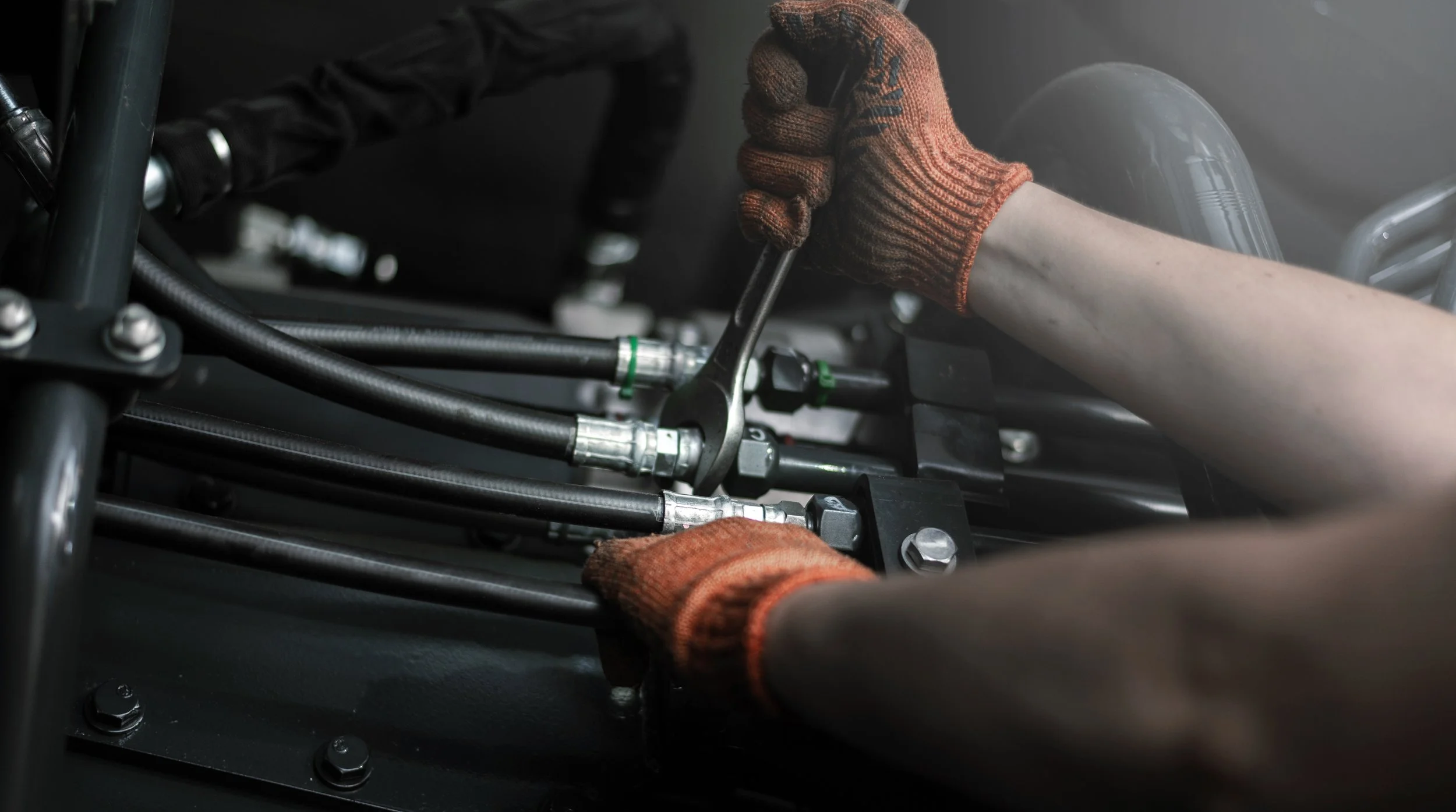In our last article we explained how hydraulic hoses and fittings work within a hydraulic system in order to perform for different applications (Read Here). If you work in one of those industries and use a hydraulic system it is important to take into consideration the specific requirements you need from your hoses and fittings. Various applications require different hoses and fittings and selecting the right one is important for optimal performance and safety.
What are the key components to consider for hydraulic hoses?
1. Inner tube
The inner tube of a hydraulic hose carries the hydraulic fluid and is usually made of synthetic rubber of thermoplastic materials. This must be compatible with the specific hydraulic fluid used in the application to ensure reliable performance and prevent degradation.
2. Reinforcement Layer
Surrounding the inner tube is a reinforcement layer, typically consisting of wire braids, spirals, or textile materials. This layer provides the strength and structural support, preventing the hose from bursting under high pressure and resisting kinking or collapsing during operation.
3. Outer cover
The outer cover is meant to protect these inner components from abrasion, environmental factors, and other external hazards. It is made of synthetic rubber or thermoplastic material and may feature additional layers for added durability and weather resistance.
What are the key components to consider of hydraulic fittings?
1. Material
The materials used for the hydraulic fitting to give the fitting its strength and durability. The most common materials for hydraulic fittings are stainless steel or brass. The material for fittings is typically based on price, temperature and pressure ratings. As stainless steel is more expensive but can be used in much wider ranging environments than its brass counterpart.
2. Fitting ends and connector types
Hydraulic fittings typically feature threaded ends that allow them to be securely attached to hydraulic hoses and components. Common types include O-ring, Mated angle, and the tapered thread connection. These connections are key to seal in the hydraulic fluid and avoid leaks to your system.
3. Permanent v. Reusable
This part of the fitting is the way in which it is attached to the hydraulic hose. Permanent fittings require a crimper to attach to the hose, while the reusable fittings can connect using common tools. While the permanent are much more common they are not as popular due to the higher cost and downtime maintenance causes.
What are key factors to consider in choosing the Right Hydraulic Hose and Fitting
1. Identify Application Requirements
Your application of your hydraulic system is one of the most important things to pay attention to when deciding on correct hydraulic hose and fittings. You must determine the maximum operating pressure, temperature range, and fluid type of your hydraulic system. For example pressure rating is one of the biggest factors to determining whether you can use a permanent or reusable fitting and in determining what type of reinforcement layer for your hose (see article on thermoplastic vs. spiral vs. braided).
2. ID your hose
If you look at the lay line of your hose typically you will see some letters and numbers denoting the hoses SAE rating. These ratings can tell you all about the hose you have on your system (see article on our SAE rating guide). However if your hose does not have an id or it is damaged you will need three different measurements - inside diameter, outside diameter, and length. When measuring length, please make sure to account for allowances in your hose length for movement and routing.
3. Choose the right fitting
First you need to make sure the fitting material is correct for the operating environment. While material is a big driver of costs in hydraulic fittings do not try to use cheaper materials than your environment requires. Doing so can result in fittings failing and possibly cause danger to those in the area. Next you will need to match the thread and connection type of the fitting to the system components. A common hydraulic fitting type in North America is JIC fittings, they feature a 37 degree flare for leak proof connections. Other examples include British Standard Pipe fittings (BSP) commonly used in Europe and National Pipe Tapered fittings (NPT) often used for high pressure applications.
4. Consult and confirm
Finally it is important to consult with manufacturers specifications to ensure proper selection and installation. By having the information above identified your hydraulic hose and fitting salesperson should be able to help you purchase the correct solution for your system.
As you can see the information above is about putting together the best components for the efficient and reliable operation of your hydraulic system. By considering application factors you can ensure the longevity and performance of the hydraulic fittings and hoses. As always a Bamco sales rep is here to help work with you to answer any and all of your hydraulic hose questions.

